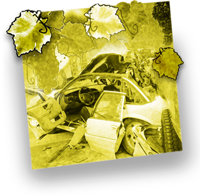Read: Drinking and Driving
DRINKING AND DRIVING
- In the United States in 2007, the death toll from teenage
drunk-driving accidents was 1,393—nearly four fatalities every day of the year.
- Motor vehicle accidents are the leading cause of death among teenagers in the US and are responsible for more than one in three deaths of American teenagers. Of the teen drivers killed on the road in 2006, 31% had been drinking, according to the National Highway Traffic Safety Administration.
For most people, these are only statistics—shocking, perhaps, but only statistics. But for the families and friends of those who die as a result of teenage drinking and driving, each number represents a tragic loss.
Alcohol distorts a person’s perceptions and judgment. People under the influence of alcohol readily admit their reaction time is slower than when not drinking, and they take many chances they would never take when sober. Too often those chances are fatal.
Alcohol is absorbed into the bloodstream via small blood vessels in the walls of the stomach and small intestine. Within minutes of drinking alcohol, it travels from the stomach to the brain, where it quickly produces its effects, slowing the action of nerve cells.
Approximately 20% of alcohol is absorbed through the stomach. Most of the remaining 80% is absorbed through the small intestine.
Alcohol is also carried by the bloodstream to the liver, which eliminates the alcohol from the blood through a process called “metabolizing,” where it is converted to a nontoxic substance. The liver can only metabolize a certain amount at a time, leaving the excess circulating throughout the body. Thus the intensity of the effect on the body is directly related to the amount consumed.
When the amount of alcohol in the blood exceeds a certain level, the respiratory (breathing) system slows down markedly, and can cause a coma or death, because oxygen no longer reaches the brain.


